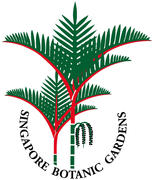Stictocardia mojangensis
Nomenclature
Stictocardia mojangensis (Vatke) D. F. Austin & Eich, comb. nova
Ipomoea mojangensis Vatke in Linnaea 43: 515. 1882. - Holotype: Madagascar, "propeMojanga" [= Majunga, Mahajanga], 5.1880, Hildebrandt 3410 (B [destroyed]; isotype: P, n.v.) -Fig. 2.
Description
Willdenowia, Bd. 31, H. 1 (Aug. 31, 2001), pp. 79-85
Biogeography, Ecology and Natural History
Known from the western part of Madagascar (Deroin 2001: fig. 20).
Flowering and fruiting in August, the dry season. At flowering there are no leaves on theplants. When grown in the greenhouse, shape and size of the leaves, as given here (Fig. 2d), are variable.The same variation occurs in wild plants according to Deroin (2001). Altitude: 10-800 m.
Willdenowia, Bd. 31, H. 1 (Aug. 31, 2001), pp. 79-85
Chemical Data
With the exception of Stictocardia tiliifolia (= S. campanulata (L.) Merr.)chemical constituents of the genus are unknown. In contrast to S. tiliifolia, which produces ergotalkaloids in the seed (Chao & Der Marderosian 1973, Lee & al. 1979) and in the vegetative aerialparts (Schimming 2001), we could not find these compounds in S. mojangensis. This is remarkable, since ergot alkaloids are common constituents of the related genera Argyreia and Turbina(Argyreieae). Also present in S. mojangensis are a number of pyrrolidine, simple lipophilictropane and hydrophylic nortropane alkaloids (Table 1), common constituents of convolvulaceousspecies. All these alkaloids could be detected by the well-known GC-MS method, which has been already applied for other convolvulaceous species in our group (for experimental detailssee Jenett-Siems & al. 1998, Schimming & al. 1998). However, our detection of cyanogenicglycosides in the seeds and vegetative aerial parts of S. mojangensis by means of the Feigl-Angertest (Tantisewie & al. 1969) is unusual for the Convolvulaceae. Studies on structural details areunder investigation. To date unequivocal evidence of cyanogenic glycosides is available only for two Merremia species, viz. M. dissecta (Nahrstedt & al. 1990) and M. vitifolia (Jenett-Siems1996, Jenett-Siems & al. 1996). These glycosides have not been found in a number of otherMerremia species, or in other convolvulaceous genera (unpublished results).
Willdenowia, Bd. 31, H. 1 (Aug. 31, 2001), pp. 79-85
Authorship for webpage


